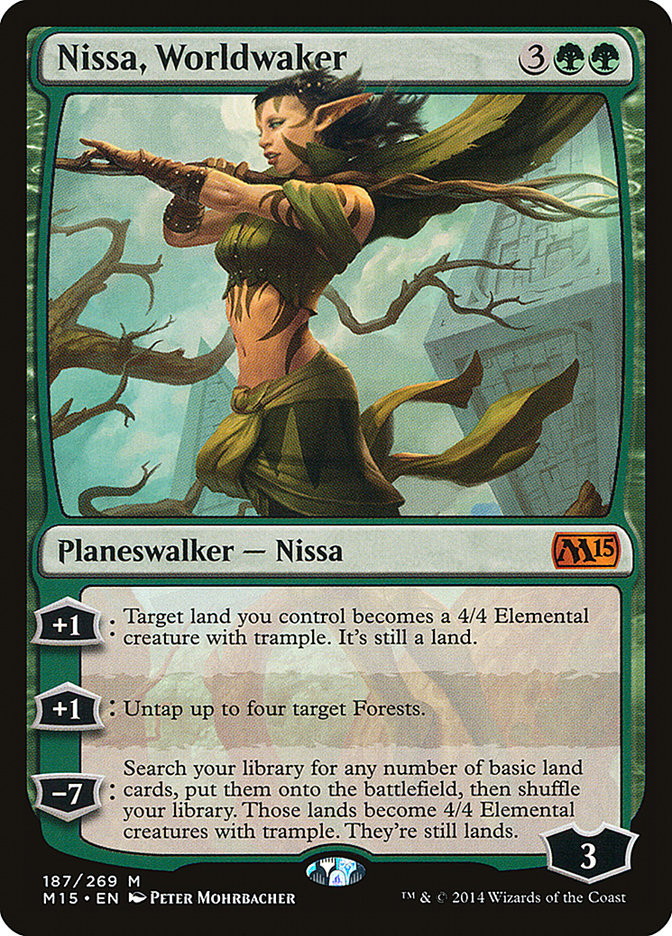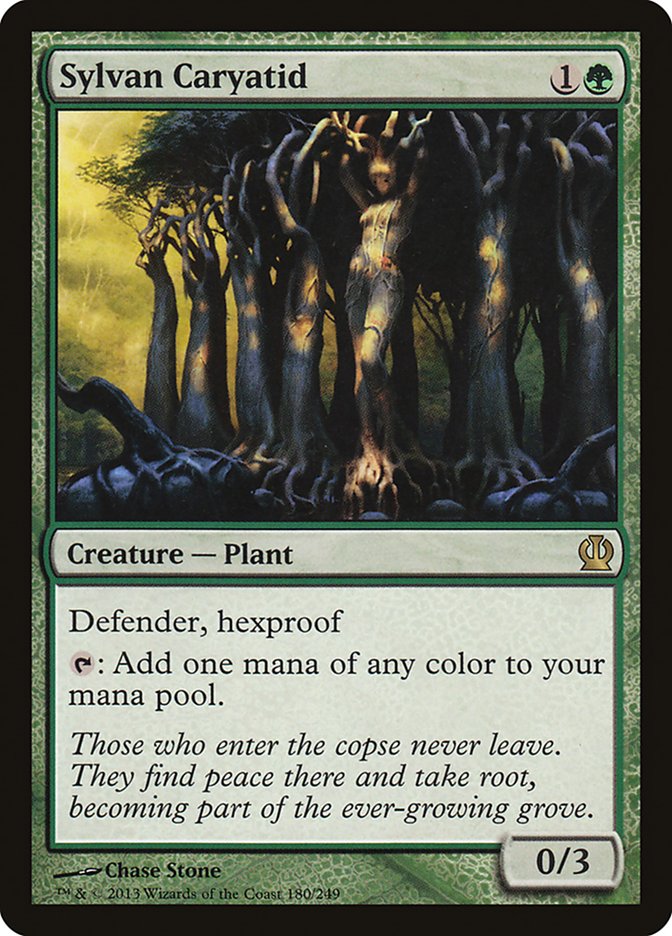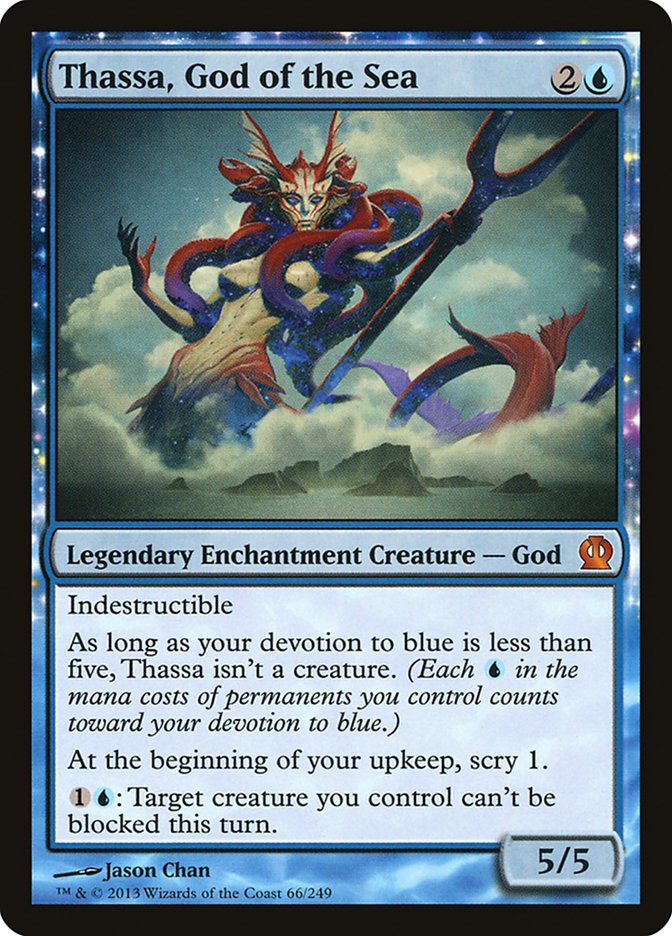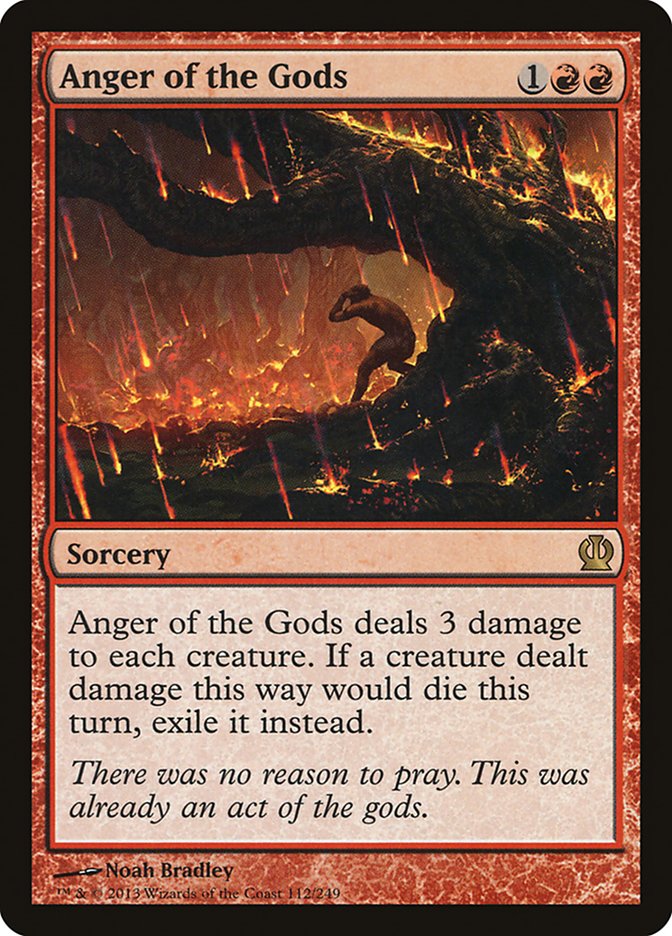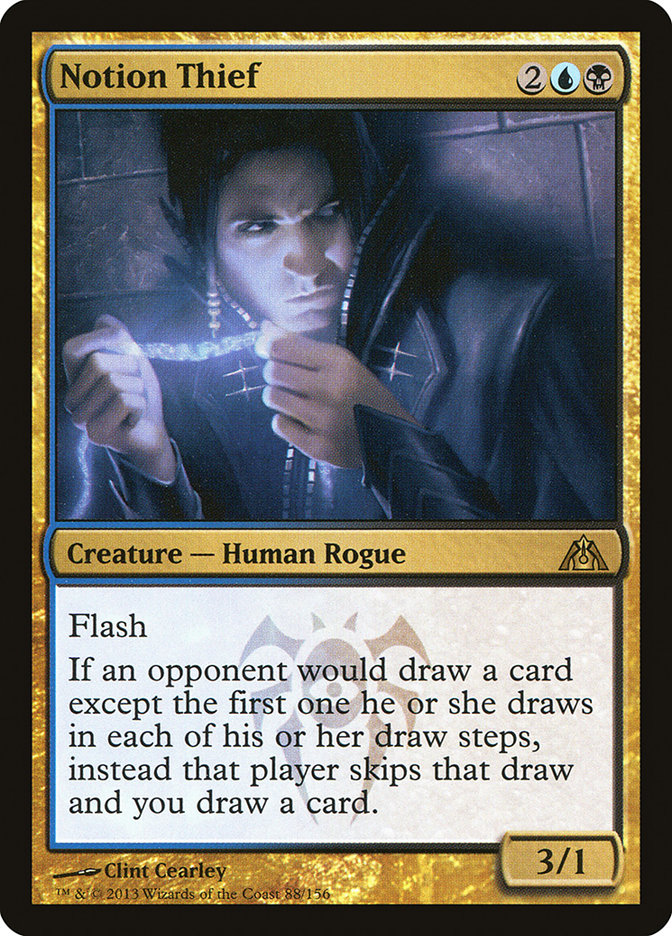The last few weeks have been very exciting for the game. We had a Pro Tour where a few new decks cropped up, and then we had some significant changes to
Organized Play. At the Pro Tour, it was announced that all future Pro Tours would use the Standard format. For many of us, this left a sour taste in our
mouths simply because every deck that had been dominant over the last year continued to be dominant even with the release of three additional sets.
Mono-Black Devotion, Mono-Blue Devotion, and U/W Control littered the tournament, and the response to the announcement that this would be the future of Pro
Tours was not well received.
In what seems like the biggest revolt against a change I’ve seen in some time, Wizards of the Coast listened to what we had to say:
We love Modern.
After the original announcement, people went a little nuts on social media exclaiming that WotC had “killed Modern before it even had a chance to shine.”
In what seemed to be another victim in the cycle of bringing us new formats and then axing them just a few years later (Four-Year Extended comes to mind),
Modern seemed like it was being put out to pasture. No more Pro Tours meant people wouldn’t care about it nearly as much, even if it was just one Pro Tour
a year. That would mean less people playing Modern at FNM, lower attendance at Grand Prix, and most people thinking Modern was just a cheaper, weaker
version of Legacy.
Well the people have spoken, and the Modern Pro Tour is back before it ever really left! Pro Tour Washington, D.C. (aka Dewey) will feature the Modern
format, and everyone gets what they want (except Brad Nelson). I, for one, am very happy with this outcome, as Modern has been somewhat of a fun
side-project for me over the last few years. With the Open Series now featuring a Modern Premier IQ every Sunday, paying out $5,000, Modern seems to be
alive and well.
The original decision to cut all non-Standard formats for Pro Tours was actually a pretty smart change, in my opinion. Older formats don’t really showcase
the cards in the newest set, as they tend to get overshadowed by decks and interactions that have been around for a while. That isn’t to say that new cards
can’t change anything (Deathrite Shaman, Snapcaster Mage), but the likelihood of a new deck or new card dominating the tournament is pretty low. That would
generally take them printing something that could be conceived as a mistake, as cards that are powerful enough to influence Modern are probably too good
for a much smaller format like Standard.
But while very few new cards will have an impact on Modern, that generally isn’t true for Standard. And having a Standard Pro Tour should highlight new
cards and how they have affected the current Standard format. Unfortunately, Theros and Return to Ravnica Block were far too powerful for much of anything
to rise up through the ranks, and the formula they devised for the next year of Pro Tours would have been catastrophic if implemented during the last year
of tournaments.
Let’s be real for a moment. The Pro Tour is a marketing tool used by Wizards of the Coast to promote their new sets. They have a Pro Tour after the release
of every new set for a reason. The changes to the Pro Tour formats were designed to showcase the release of every new set, and because Standard is the most
relevant format while also being one of the easiest ways to showcase said new cards. Block Constructed is a wash because no one actually cares about
watching it, and Modern (or possibly Legacy, for that matter) does not do a great job of showing off the new product. Standard makes sense.
In the long run, I think people will grow tired of Modern, or WotC will realize they have to continuously ban or unban cards to shake up the format. I’m
thinking that they will eventually revert back to their original plan of “all Standard Pro Tours,” but they are hedging for now due to the uproar that the
initial announcement caused. I appreciate the fact that they are listening, but I wouldn’t be too quick to place judgment on their decisions based on the
short term when they are definitely in it for the long haul.
The Shape of Standard to Come
If you watched coverage of Pro Tour Magic 2015, you would have noticed a trend. As I said before, Mono-Black Devotion, Mono-Blue Devotion, and U/W Control
were rampant. People had their splashes, but very few decks seemed to shake things up. Until the last few rounds of the tournament, it was unclear whether
M15 had changed a thing, but we ended up seeing some very interesting lists. My favorite, which should come as no surprise, was the Jund Planeswalkers deck
featuring my boo, Nissa, Worldwaker.
If you haven’t seen the deck yet:
Creatures (12)
Planeswalkers (11)
Lands (24)
Spells (13)

We’ve seen Jund Monsters, and we’ve seen various Jund decks cropping up throughout the recent years in Standard, but this one is a bit different. With
Black Devotion decks packing so much removal, and the U/W Control decks relying on Supreme Verdict, having a midrange deck based solely around
planeswalkers is quite powerful. Both of the premier midrange/control decks in the format have very few ways to actually kill a planeswalker.
The lack of Polukranos, World Eater comes as no surprise to me, with nearly every Black deck relying on Lifebane Zombie as their three-drop. When that’s
the case, Polukranos can be a liability. Instead of monsters like Polukranos and Stormbreath Dragon, Ichikawa opted for planeswalkers that do similar
things, yet are much less vulnerable to the common removal from the top decks in Standard.
Elvish Mystic, Sylvan Caryatid, and Courser of Kruphix make up the heart of most green decks in Standard. And while you can still occasionally get one of
them eaten by a Lifebane Zombie, it is not nearly as devastating as having your major win condition fold to a triggered effect from a commonly played,
efficient three-drop creature. The ability of these cards to generate a lot of mana is fantastic for a deck as mana hungry as Jund Planeswalkers. Nissa,
Worldwaker is particularly greedy with her lands, so having Courser of Kruphix continually generate new bodies to animate keeps the deck running smoothly.
The easiest comparison for Nissa, Worldwaker for a deck like Jund Planeswalkers is a slightly bigger version of Xenagos, the Reveler. Xenagos has long been
a driving force behind midrange decks in Standard, constantly generating threats with haste, or gigantic swings in mana for things like Rakdos’s Return or
using the Monstrous abilities on Stormbreath Dragon or Polukranos. While Nissa, Worldwaker isn’t quite the same as Xenagos, she makes creatures that are
twice as big with *virtual* haste if you have enough lands and can generate a few extra mana here and there if necessary.
With eight planeswalkers that can make creatures to put pressure on the opponent, as well as put the extra mana they can generate to good use, Jund
Planeswalkers is a deck that is both thought out and well built. As long as you can weather the storm of aggressive decks via your removal, your
planeswalkers should be able to take over most games.
Unfortunately, I think that this deck, like most green decks, is an underdog to Mono-Blue Devotion. Tidebinder Mage, Thassa, and Master of Waves all pose
serious problems for the deck, not to mention Cloudfin Raptor can get out of control before you’re able to deploy your bigger threats. This deck doesn’t
play that much removal, though it does get a bit better after sideboarding.
One of the major issues with green decks in Standard is that there is a tension between cheap sweepers like Anger of the Gods and playing mana accelerators
like Sylvan Caryatid and Elvish Mystic. But while many of the aggressive decks in the format will fold to Anger of the Gods, Supreme Verdict, and the like,
these cards will severely hinder your ability to develop your mana. Too many times throughout the history of Magic I have seen players with sweeper spells
like Wrath of God in their creature-heavy decks. Yes, you can sandbag your creatures until after you’ve cast your Wrath of God, but how good is a Birds of
Paradise on turn 5 or 6?
At some point, you have to make a decision on whether you want a sweeper or if you want to outpace your opponent with mana acceleration. The two do not mix
well. I think that Ichikawa was on point with his copies of Magma Spray and Doom Blade in the sideboard, but I would love to see someone try out a
Green-based deck that doesn’t play Sylvan Caryatid so that it can play Anger of the Gods. I think that Anger of the Gods is probably the best spell in
Standard that sees virtually no play, but the reason behind it is pretty simple.
The fact that U/W Control decks don’t need mana accelerators makes it a powerful control shell. It gets Supreme Verdict and arguably the best card in
Standard with Sphinx’s Revelation. Any deck that tries to play Red will almost always need some sort of early-game threat to attack Sphinx’s Revelation
before they can get going. If you allow them to get off the ground without putting that much pressure on them in the early game, their late-game spells
will just bury you. This makes the prospect of playing Anger of the Gods outside of a U/W/R deck unappealing, but the U/W decks already have access to a
solid sweeper. They don’t actually need Anger of the Gods.
There were some other goodies from the Pro Tour, but I think they’ve been run into the ground by now. Quicken is great, giving U/W Control a potent answer
to troublesome non-creature permanents via Planar Cleansing. Watching Ivan Floch plow through the entire Top 8 was a delight, yet also frightening. Will
there ever be a deck that can topple the menace that is U/W Control?
Well, I think Jared Boettcher hit the nail on the head once again with his take on Black Devotion in Syracuse:
Creatures (16)
Lands (25)
Spells (19)
- 1 Duress
- 4 Thoughtseize
- 2 Sign in Blood
- 3 Underworld Connections
- 4 Devour Flesh
- 3 Hero's Downfall
- 2 Bile Blight
Sideboard

Such a light blue splash, yet so important for defeating the U/W Control decks. Having a card like Negate to prevent people from beating you with Sphinx’s
Revelation off the top of the deck is huge, not to mention the sleeper that is Notion Thief.
I also think he was right in playing Nightveil Specter again, one card that can take a mirror and run away with it. Lifebane Zombie is so bad in any Black
mirror and is getting even worse when the Green-based decks are starting to lean towards planeswalkers as their finisher instead of Polukranos. Nightveil
Specter is also pretty awesome against Blue Devotion decks, giving you a way to steal games fairly easily by hitting their Master of Waves or other
ridiculous cards off the top of their deck.
One major hole in this deck seems to be G/W Aggro decks. Voice of Resurgence is a major problem when your removal spell of choice is Devour Flesh. Without
any way to kill it efficiently, Voice of Resurgence will put you in some awkward situations. Personally, I much prefer upping the count on Bile Blight and
possibly Ultimate Price as your spot removal spells, but the dual-ability of Devour Flesh to eat your own creature to stay alive comes up a lot. This is
especially true with Desecration Demon.
Devour Flesh also loses a lot of value against a deck like Rabble Red, where they have so many cheap creatures to pressure you. Only a few of them actually
matter, making Devour Flesh sub-optimal in a lot of scenarios. With so many one-drops, and even Burning-Tree Emissary acting as a free creature, Devour
Flesh will rarely kill what you need it to kill. Being on the play can help a ton, but that’s true in most matchups. The deck doesn’t have that
many ways to kill a Goblin Rabblemaster.
Going forward, I think the Black Devotion decks need something like Drown in Sorrow to combat this menace. Without it, the deck will overrun you quite
easily. Drown in Sorrow can have applications in other matchups as well, as many of the strategies built to beat Black Devotion focus on flooding the board
with cheap threats. Without some sort of sweeper, beating those draws can be very difficult, if not impossible. Bile Blight can help alleviate some of that
pressure, but that still means playing more copies of it over Devour Flesh.
Beating Delver in Legacy
People love to hate the best deck(s) in a given format. Delver of Secrets in Legacy is no different. Over the last few months, there have been a lot of
victories in the hands of Delver, as well as multiple Top 8s at StarCityGames.com Legacy Opens completely dominated by the little Insectile Aberration, and
I am just sick of it.
C’mon people, are you even trying anymore?
Luckily, Delver did not win this past weekend in Syracuse, though it did put five copies of the deck into the Top 8. When you start rooting for Miracles or
Burn to win a tournament, you know something is wrong. But honestly, Delver decks aren’t anything new. We’ve been playing with and against them for a long
time now, and their sudden resurgence and dominance in Legacy feels like waking from some strange dream. How did we get here?
In the last year, the only major card to pop up in Legacy that wasn’t there before was True-Name Nemesis. In all honesty, True-Name Nemesis was a mistake.
No, it isn’t ban-worthy, though it absolutely warps how we have to build our decks in order to beat it. Most people tend to lean on the “get bigger” side
of things, opting to play one combo deck or another. I, for one, have been playing Sneak and Show for a while now because I don’t want to get into a war
where either player has a True-Name Nemesis and it actually matters. From a combo player’s perspective, True-Name Nemesis is irrelevant. But putting more
and more people into the combo camp of things actually ends up making Delver of Secrets a much better card.
In the traditional sense of metagaming, Aggro-Control decks like Delver tend to pray on dedicated combo decks. A fast clock with disruption is much easier
to assemble than a three-plus card combo. Delver decks have generally been favored against the majority of combo decks in Legacy since the card was
printed, and things haven’t changed. The only thing that has changed is that True-Name Nemesis is pushing more and more people away from
interacting with the opponent, giving Delver decks a significant edge in an open field.
I think that the best True-Name Nemesis deck has an edge against most Delver decks: Deathblade.
Creatures (13)
Planeswalkers (4)
Lands (23)
Spells (20)

Brad Nelson has been putting in work with the archetype ever since I hooked him last year. His work on the deck has been awesome, and I’ve loved watching
him grow as a Legacy player. Once you start to understand the intricacies of Legacy building your deck becomes much easier, and I’ve watched Brad bloom in
the format.
While some Delver draws will still end up with you getting stomped thanks to the blowout potential of Wasteland (and Stifle, to some extent), having access
to Deathrite Shaman gives you much more play when it comes to those types of situations. Deathrite Shaman is potent against Wasteland archetypes, but it
also has a pretty big target on its head. While most Delver decks don’t have that much removal, they will almost always point a Lightning Bolt at Deathrite
Shaman since it counteracts one of their easiest methods to victory.
But when they focus the majority of their attention on Deathrite Shaman, that occasionally allows for you to steal games with Stoneforge Mystic.
Batterskull is a card that many of the Delver decks have a tough time beating, and freeing up Stoneforge Mystic thanks to their focus on Deathrite Shaman
is gigantic.
The easiest way to beat Delver decks is by playing a fair game of Magic against them. This fair game usually involves having access to more mana sources
than usual, whether that means Green Sun’s Zenith, Deathrite Shaman, or some other means of acceleration. Delver decks thrive when their cheap counters
connect, and the easiest way to keep that from happening is to play more mana sources.
As far as Deathblade is concerned, I’m more of a fan of lowering my curve. I don’t like maxing out on True-Name Nemesis, or playing too many copies of
Liliana or Jace. I like Snapcaster Mage probably more than most human beings, and I like my removal spells to be pretty cheap. Diabolic Edict is a card
I’ve enjoyed playing in this archetype but only when I have access to Snapcaster Mage. Otherwise, Liliana of the Veil is probably a bit better. Lowering
your curve is an easy way to get a leg up on Delver decks while also giving you more things to do with your Deathrite Shamans. When your spells are cheaper
you can either play more of them in a turn or have extra mana to activate Deathrite Shaman’s abilities. All of these things make playing against Daze and
Spell Pierce much easier on you.
If you want to beat Delver decks in Legacy, playing a combo deck is not the way to go. Sometimes the draws from combo decks will be too much to overcome,
but I never want to be the combo deck in a Delver versus combo matchup. There are too many variables, and too much can go wrong. They are going to be the
aggressor, and it is quite difficult to fight through cheap disruption while getting clocked by a flipped Delver.
I’ve tried Sneak and Show, and I have to say I love it, but I just don’t think it is the correct choice for a metagame full of the little Insectile
Aberrations. Until something changes or people realize how to beat Delver decks again, I think I’m just going to start playing their game.
These past few weeks have been incredibly exciting for Magic, and I can’t wait to see what else they have in store for us. This weekend is GenCon, and
there aren’t too many Magic events happening, but I’ll likely be writing about what decks I’ll be piloting in the StarCityGames.com Open Series in
Washington, D.C. leading up to the Season Three Invitational in New Jersey!


